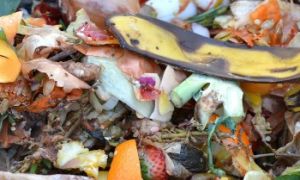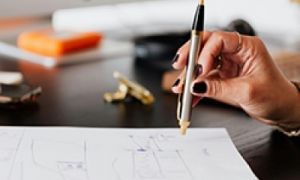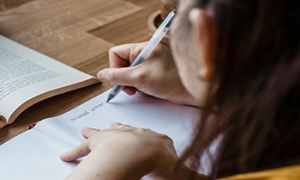Activities and experiences both play crucial roles in early childhood education, but they have distinct characteristics. The following article provides information on What Are Activities, What Are Experiences, Examples Of Experiences, Examples Of Activities, Integrating Both in Early Childhood Education and more.
What Are Activities?
-
Structured: These activities are often planned and structured with specific educational goals in mind. For example, tracing lines to develop prewriting skills or sorting objects by color and shape.
-
Skill Development: They focus on developing particular skills, such as fine motor skills, cognitive abilities, or language development.
-
Guided: Typically guided by educators, these activities ensure children are learning specific concepts or skills.
-
Examples:
-
Tracing Worksheets: Enhances fine motor skills and prepares children for writing.
-
Counting Games: Helps with number recognition and basic math skills.
-
Letter Matching: Assists with early literacy and phonics understanding.
-
What Are Experiences?
-
Holistic: These experiences are broader and more holistic, encompassing various aspects of a child's development, including social, emotional, physical, and cognitive growth.
-
Child-Led: Often child-led or emergent, allowing children to explore, discover, and learn at their own pace.
-
Real-World Context: They provide real-world context and relevance, making learning more engaging and meaningful.
-
Examples:
-
Outdoor Play: Encourages physical activity, social interaction, and connection with nature.
-
Cooking Activities: Teaches measurement, following instructions, and sensory exploration.
-
Dramatic Play: Supports social skills, language development, and creativity.
-
Integrating Both in Early Childhood Education
-
Balanced Approach: Combining structured learning activities with broader experiences creates a well-rounded educational program.
-
Adaptability: Tailoring activities and experiences to meet the diverse needs and interests of children enhances their engagement and learning outcomes.
-
Reflection and Documentation: Observing and documenting children's responses to both activities and experiences provides valuable insights for continuous improvement and personalized learning.
By incorporating both meaningful learning activities and experiences, educators can create a rich and dynamic learning environment that supports all aspects of a child's development.
Examples Of Activities
Here are some examples of meaningful learning activities for young children, both structured activities and broader experiences:
Structured Activities
-
Tracing Worksheets:
-
Objective: Develop fine motor skills and prewriting abilities.
-
Activity: Children trace over different lines and shapes on worksheets.
-
Example: Tracing lines on fish-themed worksheets to prepare for writing letters.
-
-
Counting Games:
-
Objective: Enhance number recognition and basic math skills.
-
Activity: Use objects like blocks or beads for counting and sorting.
-
Example: Counting blocks and grouping them by color.
-
-
Letter Matching:
-
Objective: Improve early literacy and phonics understanding.
-
Activity: Match uppercase and lowercase letters using cards or magnetic letters.
-
Example: Finding pairs of letters and placing them together.
-
Broader Learning Experiences
-
Outdoor Play:
-
Objective: Encourage physical activity, social interaction, and connection with nature.
-
Activity: Free play in a garden or playground, exploring nature, and participating in group games.
-
Example: Building a sandcastle together or playing tag.
-
-
Cooking Activities:
-
Objective: Teach measurement, following instructions, and sensory exploration.
-
Activity: Simple cooking tasks like mixing ingredients, measuring, and decorating.
-
Example: Making a fruit salad and discussing the different fruits and their textures.
-
-
Dramatic Play:
-
Objective: Support social skills, language development, and creativity.
-
Activity: Role-playing different scenarios like a grocery store, a doctor's office, or a space adventure.
-
Example: Setting up a play kitchen and pretending to cook meals for friends.
-
Sensory Play
-
Oobleck Play:
-
Objective: Explore textures and properties of non-Newtonian fluids.
-
Activity: Making and playing with oobleck, a mixture of cornstarch and water.
-
Example: Squeezing oobleck to feel it solidify and then watching it flow like a liquid.
-
-
Playdough Creations:
-
Objective: Develop fine motor skills and encourage creativity.
-
Activity: Using playdough to create shapes, letters, and imaginative sculptures.
-
Example: Creating animals or vehicles with playdough.
-
These activities and experiences provide a balanced approach to early childhood education, supporting various developmental areas and keeping children engaged and motivated to learn.
Examples Of Experiences
Here are some examples of meaningful learning experiences for young children that promote holistic development:
Outdoor Exploration
-
Nature Walks: Take children on nature walks to explore the local environment. Encourage them to observe plants, animals, and insects, and discuss what they see.
-
Garden Planting: Involve children in planting and caring for a garden. They can learn about the life cycle of plants, responsibility, and the importance of nature.
Creative Arts
-
Art Projects: Provide various art materials like paints, crayons, and clay for children to create their own artwork. This encourages creativity and fine motor skills.
-
Music and Movement: Incorporate music and dance into daily routines. Children can express themselves through movement and develop rhythm and coordination.
Dramatic Play
-
Role-Playing Scenarios: Set up different role-playing areas, such as a grocery store, doctor’s office, or space station. This helps children develop social skills, language, and imagination.
-
Costume Dress-Up: Provide costumes and props for children to dress up and act out different characters and scenarios.
Science Experiments
-
Simple Experiments: Conduct simple science experiments that are safe and age-appropriate. For example, making a baking soda and vinegar volcano or exploring magnets.
-
Sensory Exploration: Create sensory bins with different materials like rice, sand, water, and playdough. Encourage children to explore textures and properties.
Cooking and Food Preparation
-
Baking: Involve children in baking activities, such as making cookies or bread. They can learn about measurements, following instructions, and the science of cooking.
-
Healthy Snacks: Let children prepare their own healthy snacks, such as fruit salads or vegetable sticks. Discuss the benefits of healthy eating.
Social and Emotional Development
-
Group Games: Organize group games that promote teamwork and social interaction. Examples include relay races, cooperative board games, and circle time activities.
-
Emotional Literacy: Use books and stories to discuss different emotions and how to express them. Encourage children to share their feelings and experiences.
Cultural Experiences
-
Multicultural Activities: Celebrate different cultures by exploring their traditions, foods, music, and art. This fosters an appreciation for diversity.
-
Language Learning: Introduce children to basic words and phrases in different languages through songs, stories, and games.
These experiences provide a well-rounded approach to early childhood education, supporting various developmental areas and creating an engaging and enriching learning environment.
Further Reading
Spontaneous Play In Early Childhood
Kenneth Rubin - Theories Of Play
Benefits Of Sand and Water Play
Open Ended Play Materials
Stages Of Play


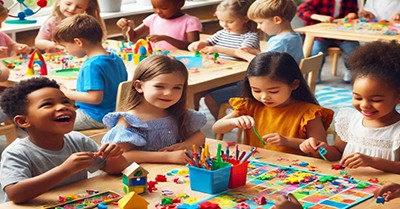



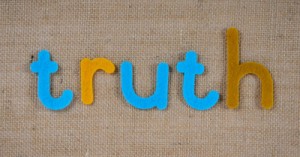
 As an Educator in Australia, your pay rate falls under the Children’s Services Award 2010. This award states the minimum amount that an employer can
As an Educator in Australia, your pay rate falls under the Children’s Services Award 2010. This award states the minimum amount that an employer can When working as a qualified Early Childhood Teacher (with a university degree) within a service, your rate of pay will come from the Educational Services
When working as a qualified Early Childhood Teacher (with a university degree) within a service, your rate of pay will come from the Educational Services When working as a Diploma Qualified Educator your pay rate is from the Children's Services Award 2010. This Award states your minimum rate of pay
When working as a Diploma Qualified Educator your pay rate is from the Children's Services Award 2010. This Award states your minimum rate of pay When working as a Cert 3 Qualified Educator, your pay rate is from the Children's Services Award 2010. This Award states your minimum rate of
When working as a Cert 3 Qualified Educator, your pay rate is from the Children's Services Award 2010. This Award states your minimum rate of Educational Leaders play a crucial role in their early childhood service by ensuring that the educational program aligns with best practices and supports the holistic
Educational Leaders play a crucial role in their early childhood service by ensuring that the educational program aligns with best practices and supports the holistic In early childhood education and care, ratios are more than a technicality—they are a frontline safeguard. Every child deserves responsive supervision, emotional connection, and developmental
In early childhood education and care, ratios are more than a technicality—they are a frontline safeguard. Every child deserves responsive supervision, emotional connection, and developmental With the new national child safety reforms kicking in on 1 September 2025, early childhood services like yours have a real opportunity to lead the
With the new national child safety reforms kicking in on 1 September 2025, early childhood services like yours have a real opportunity to lead the Here’s a comprehensive Mobile Phone and Smart Watch Policy tailored for early childhood education and care (ECEC) services in Australia, aligned with the latest 2025
Here’s a comprehensive Mobile Phone and Smart Watch Policy tailored for early childhood education and care (ECEC) services in Australia, aligned with the latest 2025 The Sea of Fish Challenge is a national initiative that invites children, educators, families, and communities to create and display fish artworks as a symbol
The Sea of Fish Challenge is a national initiative that invites children, educators, families, and communities to create and display fish artworks as a symbol Across the early childhood education and care sector, educators are sounding the alarm: current staffing ratios are insufficient to deliver safe, meaningful, and developmentally appropriate
Across the early childhood education and care sector, educators are sounding the alarm: current staffing ratios are insufficient to deliver safe, meaningful, and developmentally appropriate